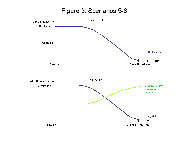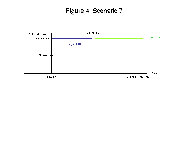Louise Demers, PhD, Jeffrey Jutai, PhD, Marcus Fuhrer, PhD, Marcia Scherer, PhD, Isabelle Pervieux, MSc, & Frank De Ruyter, PhD
ABSTRACT
Assistive technology device (ATD) utilization is a dynamic phenomenon and a methodological challenge for the implementation of longitudinal outcome studies. The objective of this study was to describe the various scenarios of use that can occur with locomotion devices between the time a person is discharged from a hospital setting and six months later. The subjects were 172 participants from the Locomotion Device Outcome Study (LDOS). Devices and changes in their use were tracked over a six-month period. Analyses revealed seven scenarios for tracking locomotion devices that are potentially important for understanding other ATD outcomes. The results also have implications for refining the provisional Taxonomy of Assistive Technology Device Outcomes developed by the Consortium on Assistive Technology Outcomes Research (CATOR) with respect to the domain of device utilization.
Keywords: device utilization; outcomes; locomotion; theory
BACKGROUND
Clear identification of ATD is a fundamental requirement for reporting outcome data that are meaningful and that can be generalized. Keeping track of initially prescribed ATD is often challenging, however, given the influence of changing life habits and unstable health status, and the need to deal with several pieces of equipment in use simultaneously. The dynamic character of device utilization is implicit in the recently published Taxonomy of Assistive Technology Devices Outcomes (1). Device utilization is subsumed under the social significance vantage because it has important implications from a societal standpoint, primarily in terms of economic issues. Literature on the topic of device utilization is abundant for outcome categories such as the frequency, duration, manner, and rate of use (2). These outcome categories implicitly assume that ATD use has a linear trajectory whereby the same device remains under scrutiny, notwithstanding other changes that occur in the person’s life. This is not what is observed in day-to-day practice. Little research has previously been devoted to describing the different scenarios that can occur with the use of ATDs. This paper reports preliminary findings from the LDOS, a longitudinal investigation of ATD users. Locomotion devices were defined as those devices that supported an individual to move independently from place to place. The objective was to map those scenarios for locomotion devices between the time a person is discharged from a hospital setting and six months later. Locomotion devices included equipment such as canes, walkers, wheelchairs, crutches, orthotics, and scooters.
METHODOLOGY
Participants were 216 individuals recruited as part of the LDOS, an ongoing, longitudinal cohort study of ATDs following the onset of a complex medical condition, hip fracture, or stroke conducted by the CATOR. The goal of this ongoing research is to gain a better understanding of the factors contributing to ATD abandonment and discontinuance. The LDOS includes baseline data collection and repeated measurements at 6-, 12-, and 24-months of follow-up on a variety of variables related mostly to device effectiveness and subjective well-being. Device use is associated with locomotion impairment following stroke, hip fracture, and complex medical conditions such as chronic obstructive pulmonary disease. Data from 172 participants who completed baseline and 6-months follow-up evaluations were available for this study. Data from an adapted version of the Assistive Technology Use Follow-up Survey (3) were extracted to track devices across time. Descriptive and analytical approaches were used to organize the data and identify meaningful scenarios of device utilization.
RESULTS
The results indicate that 45% of study participants (n=77) reported having multiple locomotion devices of different types at the onset of the study. At 6-months follow-up, 30% (n=51) had discontinued use of any type of device. Changes in the primary device occurred for 23% (n=39) of study participants, mainly in favour of less need for support from a device (90%). Individual users were found to adhere one of seven principal scenarios of utilization of their locomotion ATD, represented visually in Figures 1-4. These scenarios are regrouped according to the trajectory of the device targeted for evaluation at the onset of the study.
Continued Utilization of Target ATD
 |
Results indicate that 55% (n=94) continued using the target ATD at 6-months follow-up. There are at least four possible scenarios of device utilization. Scenario 1 (Fig. 1) describes the situation whereby the individual continues to use the item procured at onset as a primary and only aid for locomotion. Scenario 2 (Fig. 1) is appropriate to individuals who are simultaneously using several locomotion ATDs of different types from baseline to follow-up, with the device procured at onset remaining the primary one.
 |
Scenario 3 (Fig. 2) represents the situation whereby users continue using the device procured at onset as a principal locomotion ATD, and they also initiate the use of an additional locomotion ATD for specific activities. Although it may not have been at baseline, the newly introduced device may have been owned by the individual prior to the occurrence of the stroke of hip fracture and subsequently began to be used. Data show that 48% (n=82) of the study participants fall into one or the other of Scenarios 1-3 involving sustained use of the same primary device. Scenario 4 (Fig. 2) builds on the template described in Scenario 3. However, the newly introduced locomotion ATD becomes the principal locomotion ATD. The device procured at onset is given a less important role, but is still used to some extent. Twelve participants (7%) correspond to this scenario.
Discontinued Utilization of Target ATD
 |
At 6-months follow-up, 44% (n=78) of participants had discontinued using the target ATD. Scenario 5 (Fig. 3) is the negative mirror image of scenario 1. The device procured at onset drops out of before the 6-month follow-up evaluation, and another device is no substituted. This straightforward scenario was reported by 30% (n=51) of the sample. In Scenario 6 (Fig. 3), a locomotion ATD of a different type begins to be used before the follow-up evaluation, and it becomes the principal ATD. There may or not be a period of time when two devices are used concurrently. Close to 16 % (n=27) of the study participants fell in this category.
 |
Scenario 7 (Fig. 4) describes the situation of users replacing the ATD procured at onset by another device of the same type. For example, an individual may choose to replace a simple cane by a quad cane to enhance their security while walking, and other individuals may exchange a medium size wheelchair for a larger size one to accommodate increased body weight. The data do not make it possible to differentiate this scenario from scenario 1, though two individual cases were accidentally detected.
DISCUSSION
This study aimed to demonstrate the variety of scenarios of use that can occur with locomotion devices in the course of a longitudinal study. A comprehensive picture of these trajectories helps investigators define the ATD under scrutiny and prepare for flexible data collection approaches. The issue of clear identification is crucial in prospective study designs, especially when the data rely heavily on self-report. For example, we developed within the LDOS a form to chart the history of device use to insure precise tracking of all locomotion devices at 12- and 24-months follow-up. More importantly, the results will facilitate the development of study designs requiring specific i nclusionary and exclusionary criteria for subject participation. For instance, user satisfaction and the psychosocial impacts of ATDs are likely to differ according to scenario 1 and scenario 4. To prevent biased results, it may be appropriate to track and analyze separately data on these outcome variables for the two scenarios. The present findings have also moved us to consider an additional category within the Device Utilization domain of the Taxonomy of Assistive Technology Device Outcomes that would reflect Trajectory of Use. This addition applies to locomotion ATDs in the context of medical rehabilitation. This study’s limitations include the relatively short period of follow-up. The scenarios are likely to become even more complex with the passage of time. Additionally, other scenarios may exist that are associated with other types of ATDs.
REFERENCES
- Jutai JW, Fuhrer MJ, Demers L, Scherer MJ & DeRuyter F. (in press). Toward a Taxonomy of Assistive Technology Device Outcomes. American Journal of Physical Medicine and Rehabilitation.
- Wessels R, Dijcks B, Soede M, Gelderblom GJ & De Witte L. (2003). Non-use of provided assistive technology devices, a literature overview. Technology and Disability 15, 231-238.
- Scherer, M.J. (1997) Assistive Technology Use Follow-up Survey. Webster, NY: Institute for Matching Person & Technology, Inc.
ACKNOWLEDGEMNTS
Excluding I.P., the authors are all members of the Consortium on Assistive Technology Outcomes Research (CATOR, http://www.atoutcomes.org/). They express their appreciation to Erin Bloch for her technical assistance. This work was supported in part by grant H133A010401 from the National Institute on Disability and Rehabilitation Research.
Louise Demers, Ph.D., OT(C).
School of Rehabilitation, University of Montreal
Centre de recherche de l’Institut universitaire de gériatrie de Montréal
4565, Queen Mary Road
Montreal (Quebec), H3W 1W5
Tel: (514) 340-3540 ext. 3010
Fax: (514) 340-3548
Email: louise.demers@umontreal.ca